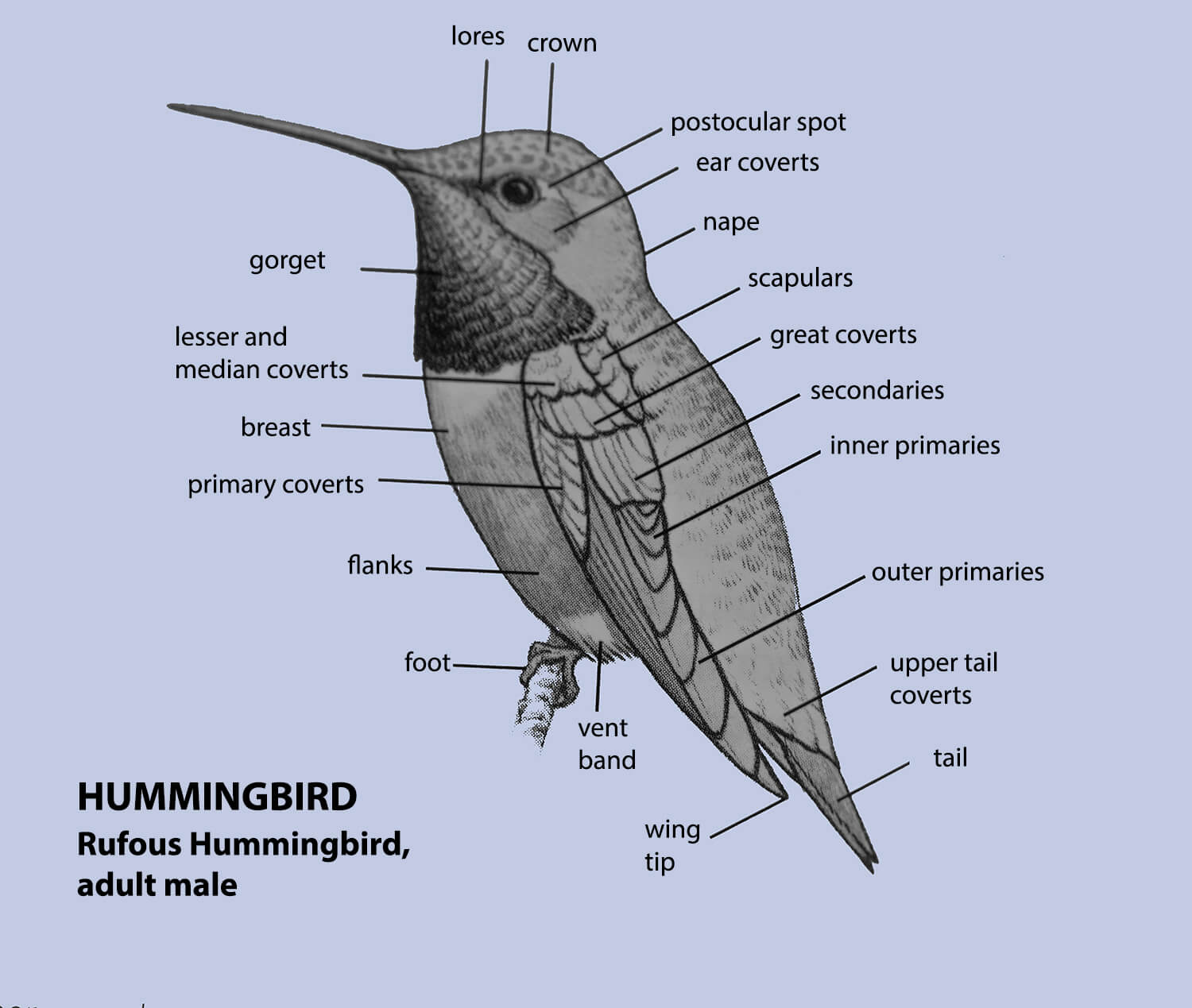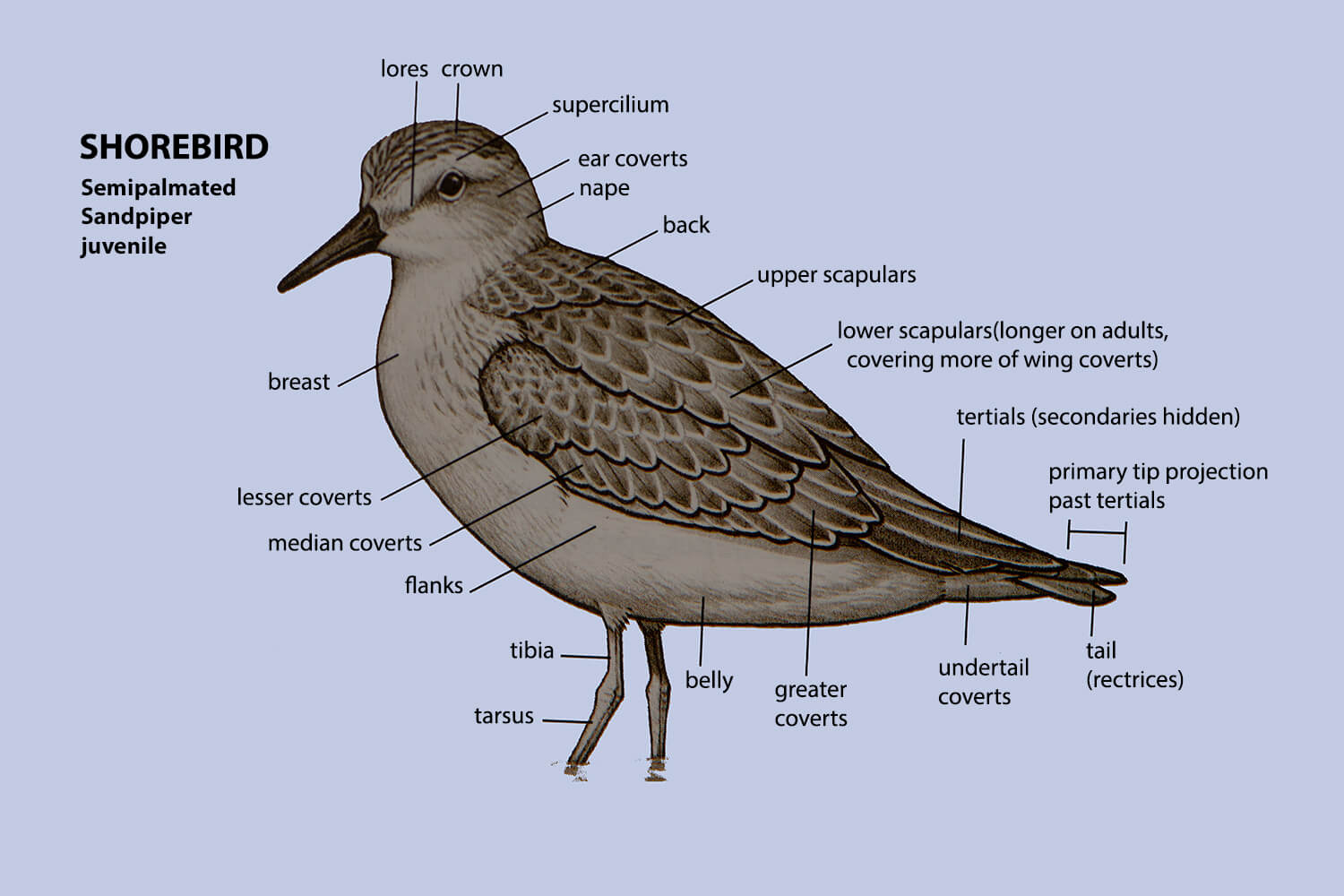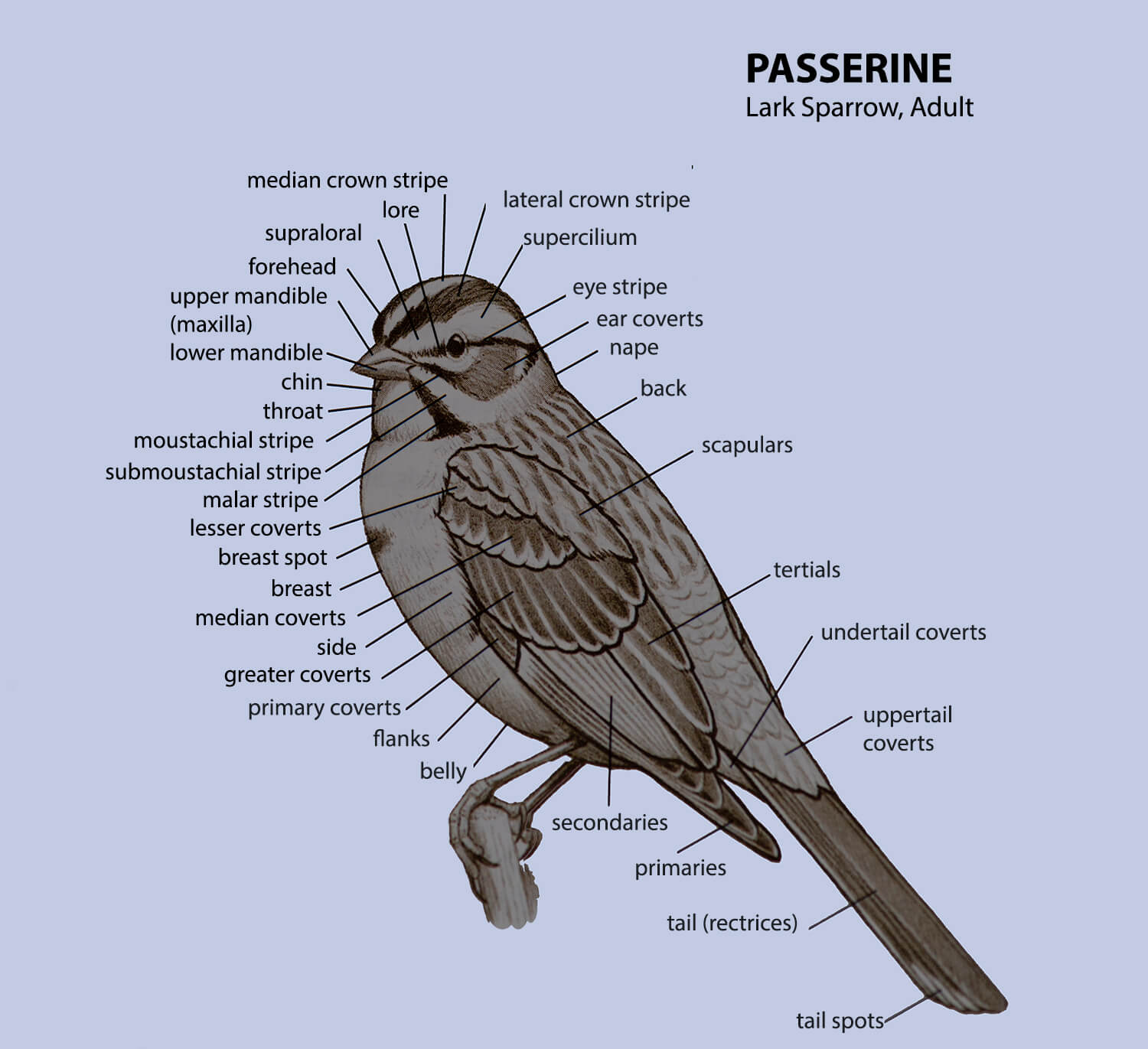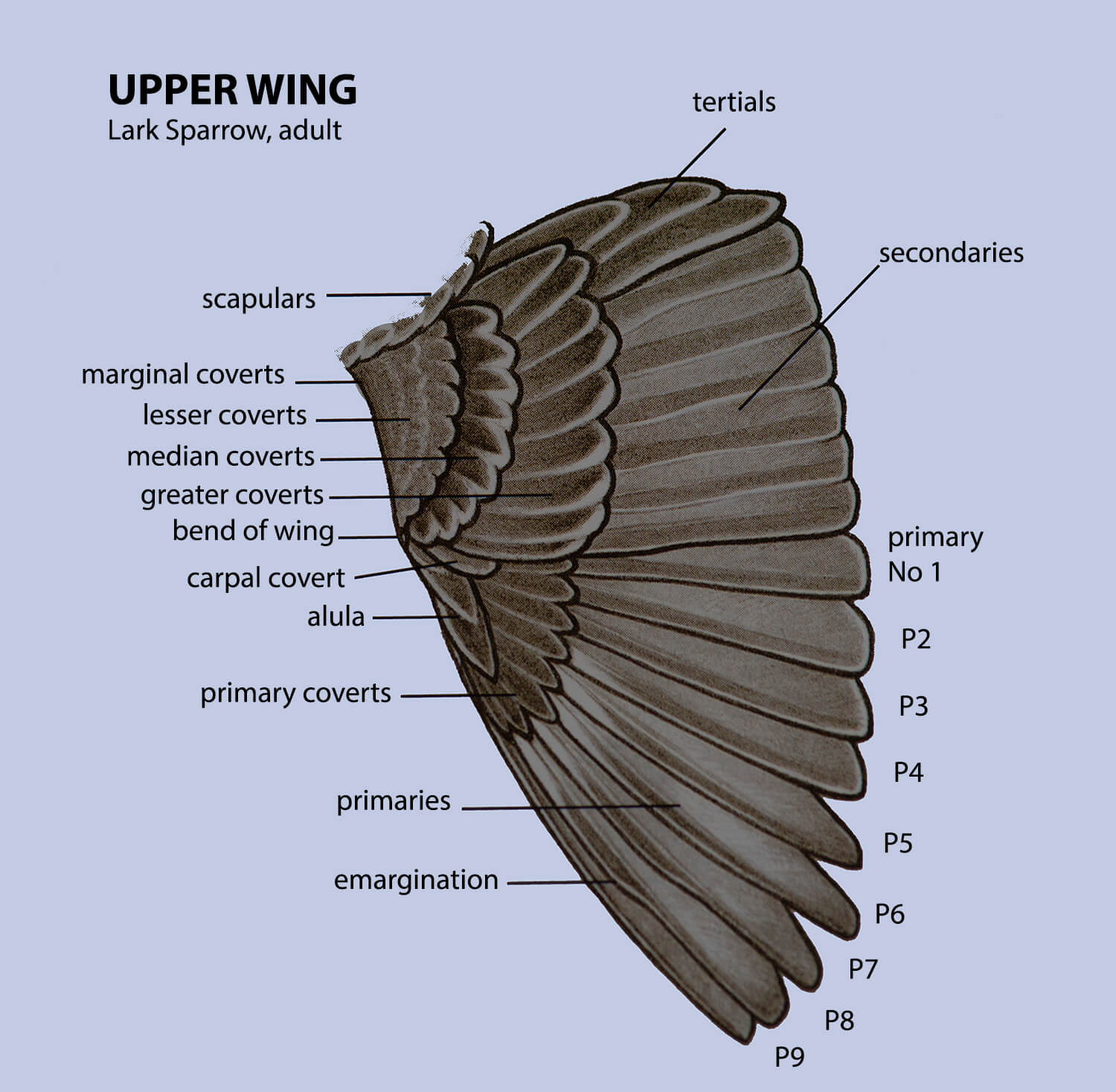Topography of Hummingbird, Shorebird and Lark Sparrow
The topography of a bird refers to the anatomical features and structural characteristics of a bird's body, particularly those related to its overall form, feathers, beak, wings, and legs.
Feather Structure: Feathers are a defining feature of birds and play a crucial role in flight, insulation, and display. Birds have different types of feathers, including contour feathers that provide the bird's shape and waterproofing, down feathers for insulation, and various specialized feathers for different functions like tail feathers for steering during flight.
Beak and Eyes: Birds have specialized beaks adapted for their diet and lifestyle, such as hooked beaks in raptors for tearing flesh or slender beaks in hummingbirds for sipping nectar. Their eyes are also typically large and well-developed, allowing for keen vision necessary for activities like hunting or navigating.
Wings and Flight Adaptations: Wings are a bird's primary organs of flight. The structure of a bird's wing, including the arrangement of feathers, wing shape, and relative size in relation to the body, influences its flight capabilities. Birds also have adapted bones that are lightweight but strong to aid in flight.
Legs and Feet: The shape and structure of a bird's legs and feet vary depending on its lifestyle. Birds that perch often have feet with specialized adaptations for gripping branches, while birds of prey have strong talons for capturing prey. Leg length and arrangement also vary based on a bird's habitat and behavior.
Body Shape and Size: The body shape and size of a bird can vary widely across species. This can influence factors such as flight agility, foraging techniques, and thermoregulation abilities.





